Modern techniques brew new success for old tea farm in Tibet
Updated: 2021-08-04 By Zhao Shiyue (chinadaily.com.cn)  Print
Print 


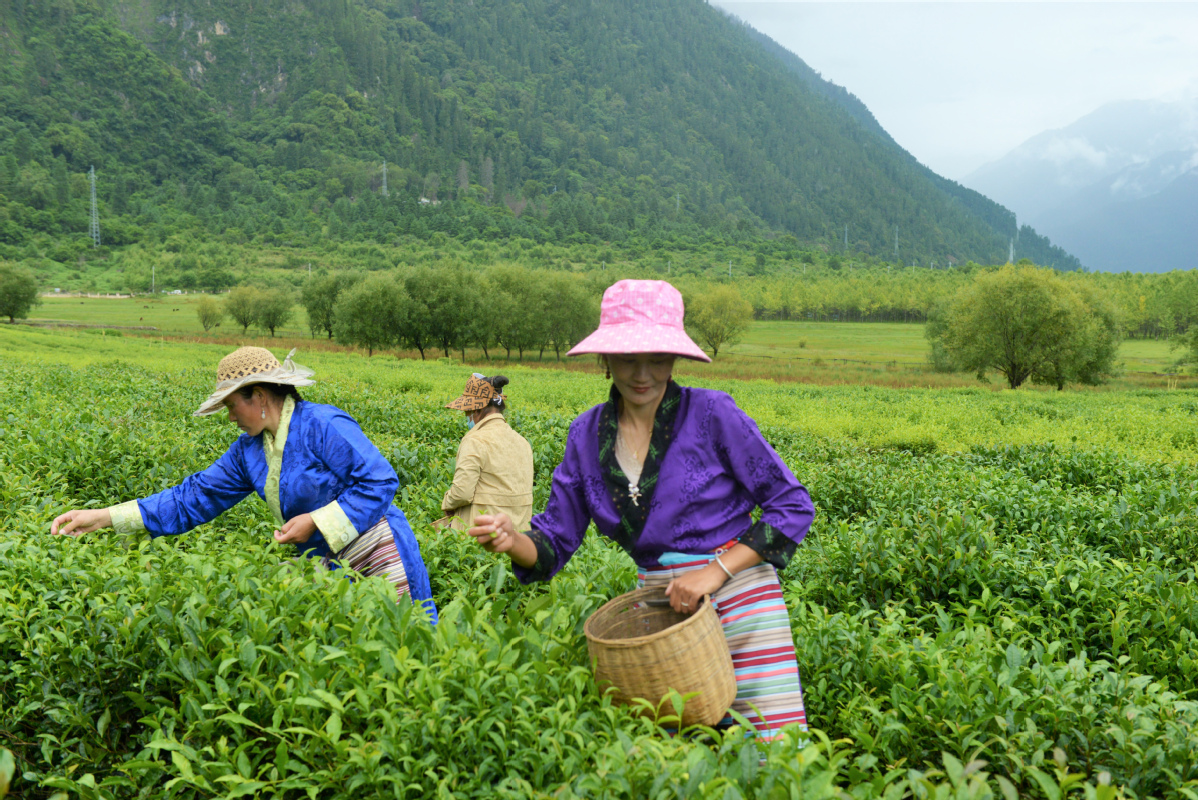
Workers pick the tea at Yigong tea plantation, in Yigong, Nyingchi in Southwest China's Tibet autonomous region, on July 29, 2021. [Photo by Zhao Shiyue/chinadaily.com.cn]
Yigong tea plantation, the highest in the world with an altitude of around 2,200 meters, welcomes its picking season from late May to early July.
Located in Nyingchi city in Southwest China's Tibet autonomous region, the 60-year-old tea farm got a new facelift in recent years, as managers introduced modern agricultural techniques in planting, processing and sales.
Huang Hualin, a senior agronomist of the Tea Research Institute at Guangdong Academy of Agricultural Science, was assigned to Tibet two years ago, along with the ninth batch of partner-assistance teams between the two regions.
"When I first came here, the plantation was not operated well, as it covered a small area with poor yields and quality of tea," Huang said.
Although favorable temperature and rich rainfall in Yigong valley created an ideal environment to nurture good tea, local farmers' out-of-date management skills hindered further development of the business.
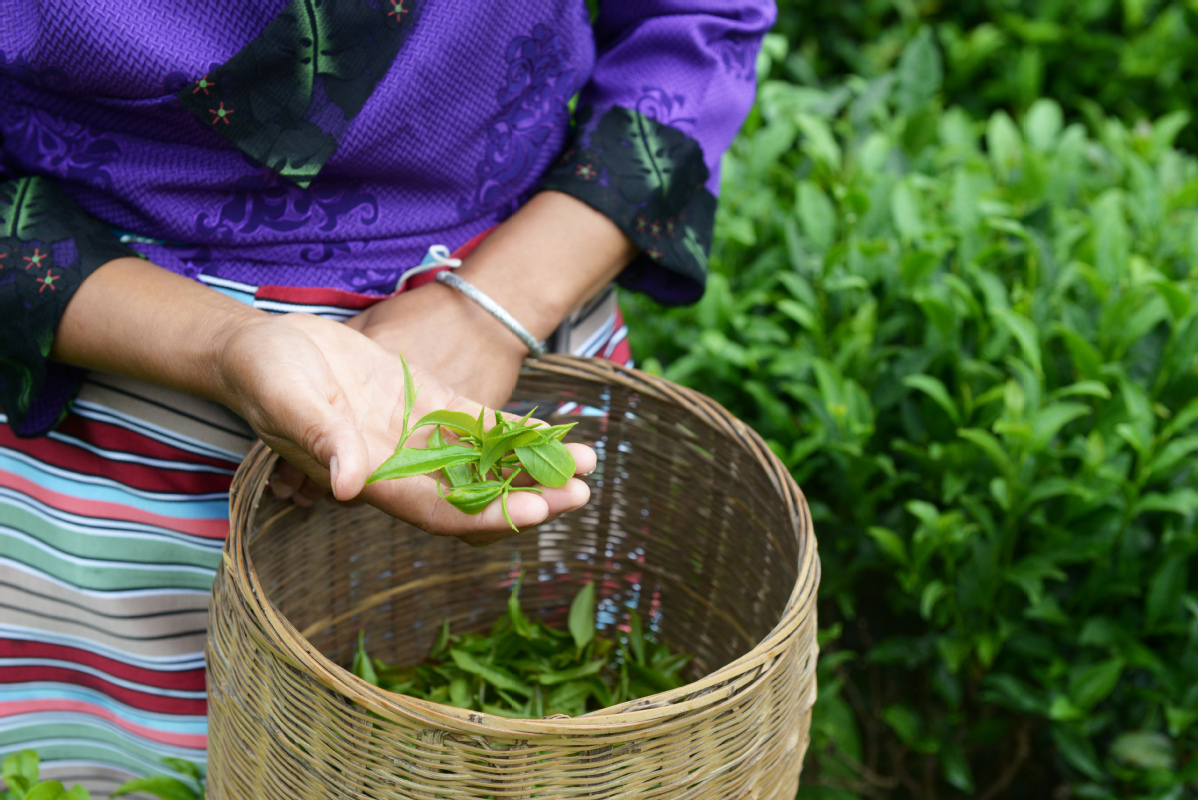
A worker shows the tea she picks in Yigong tea plantation, in Yigong, Nyingchi in Southwest China's Tibet autonomous region, on July 29, 2021. [Photo by Zhao Shiyue/chinadaily.com.cn]
Working as the production director, Huang and his team have taken multiple approaches to elevate the quality of tea. They introduced famous species from Guangdong and Fujian provinces for planting, and set up a breeding center of 30 mu (about 2 hectares) to develop new local varieties that grow well, with high yield and strong resistance in the highland.
Dai Bao, member of the Party committee and the vice-director of Yigong tea plantation, said the plantation now has an area of 340 hectares, producing teas of various colors and tastes.
"With updated techniques adapted to growing tea, the output per mu (0.06 hectares) soared from 8.5 kilograms in 2019 to about 45 kilos last year," according to Dai.
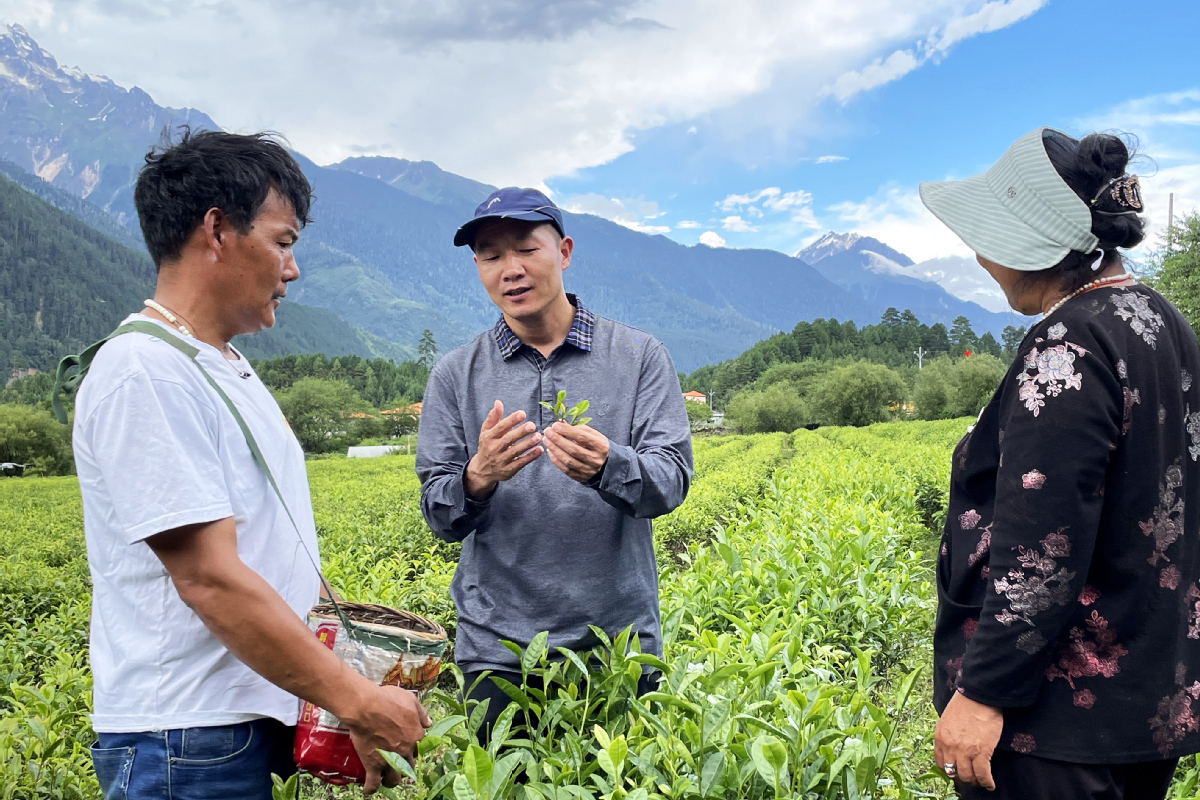
Huang Hualin, a senior agronomist of the Tea Research Institute at Guangdong Academy of Agricultural Science, teaches farmers planting techniques at Yigong Tea Plantation in Nyingchi, China's Tibet autonomous region. [Photo by Zhang Yangfei/chinadaily.com.cn]
Instead of manual operation, tea processing has been further standardized and automated.
From the fund specially used for assisting Tibet, over 2 million yuan has been invested to upgrade production facilities, including two new assembly lines for pressing tea bricks, which largely increased the efficiency.
Other machines for different steps in tea processing -- such as rolling and drying -- were also set up.
"We plan to add a fully-automated production line for black tea and green tea in the future, with investment reaching 12 million yuan," Huang said.
Sales used to be the biggest problem for Yigong tea, since the consumption capability of local people was limited in this rural township, while markets in other cities had not been fully tapped.
By registering trademarks, Yigong tea built up its own brand and reputation. Thirteen online stores, as well as five offline shops in Tibet, were set up, generating over half of the total revenue in 2020.
Guangdong, hand in hand with Tibet in partner assistance, took action to bring the tea from the plateau to southeastern China.
Based on the national poverty alleviation platform and sales channels among the Guangdong-Hong Kong-Macao Greater Bay Area, Yigong tea has been sold to 12 cities across China.

The tea bricks are seen in the factory of the tea farm, Yigong, Nyingchi in Southwest China's Tibet autonomous region, on July 29, 2021. [Photo by Zhao Shiyue/chinadaily.com.cn]
"The sales volume was only around 3 million yuan in the past few years, and the figure hit 8 million in 2020," Huang noted. "We have been in losses since the tea farm started operation, while last year marked the first time to turn a profit."
The great progress that the Yigong tea plantation has achieved would not be possible without scientific ideas adopted in every aspect of production.
"We try to bring modern techniques from China's economically-developed regions to Tibet, and establish an organic agricultural system under refined management," Huang said.
In 2020, the tea farm generated an output value of 27.4 million yuan, an increase of 77 percent over that of 2019.
It has also played an important role in increasing local people's income. Operated by a State-owned company, full-time and part-time jobs are offe to nearby farmers to cultivate the fields.
The average annual income for employees reached 22,000 yuan last year, jumping 37.5 percent compared to 2019.
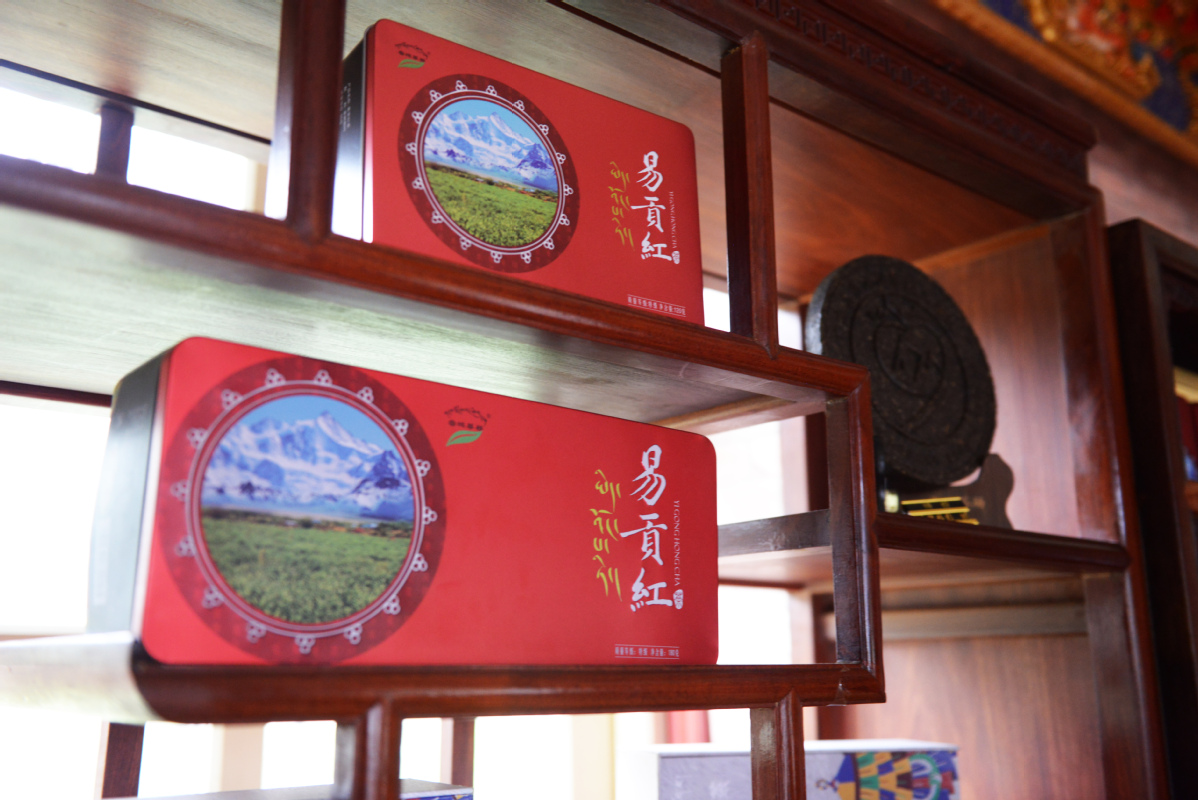
Tea products for sale in the tea farm, Yigong, Nyingchi in Southwest China's Tibet autonomous region, on July 29, 2021. [Photo by Zhao Shiyue/chinadaily.com.cn]
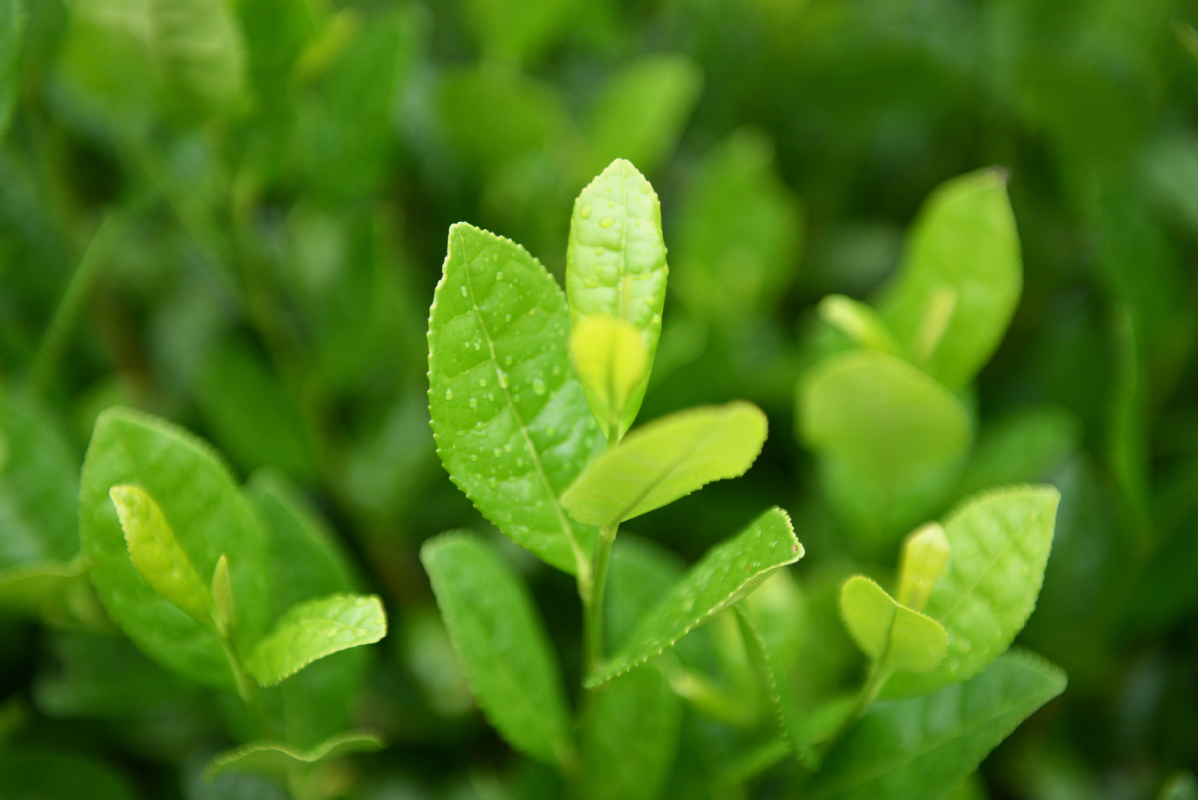
Tea bushes in Yigong, Nyingchi in Southwest China's Tibet autonomous region, on July 29, 2021. [Photo by Zhao Shiyue/chinadaily.com.cn]
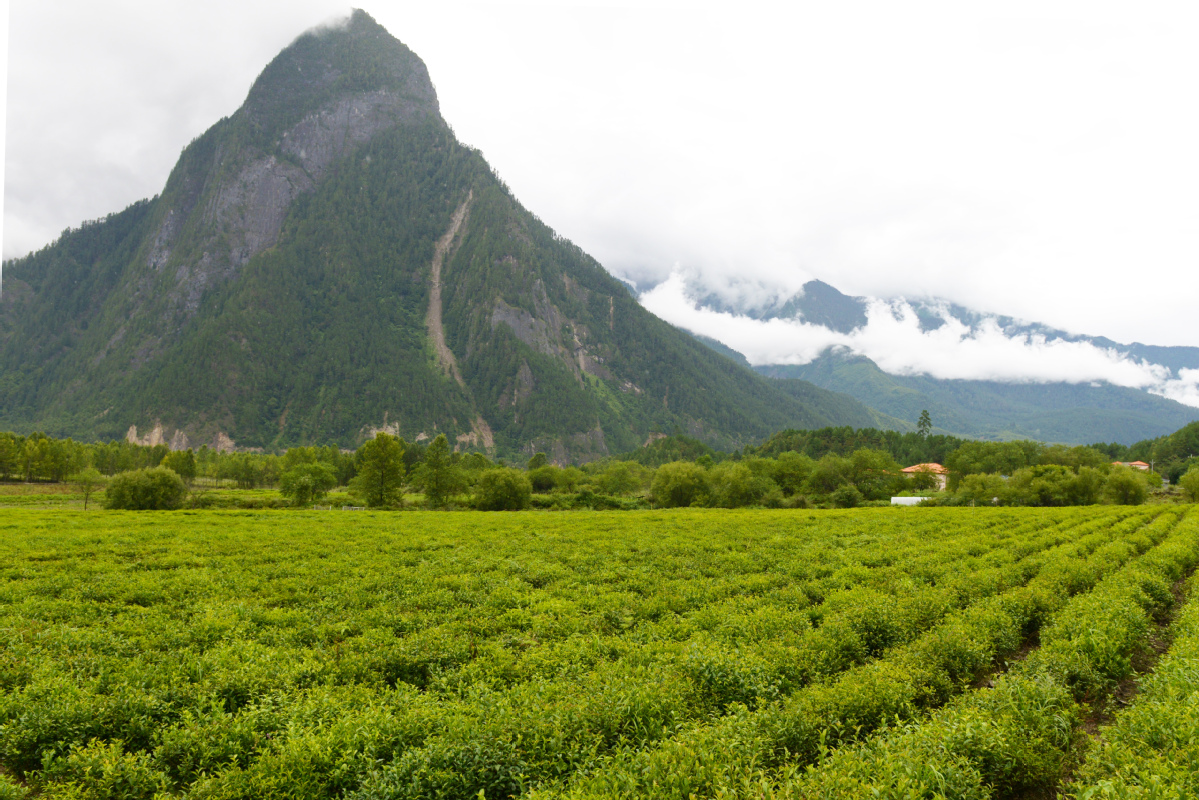
A view of the tea farm, Yigong, Nyingchi in Southwest China's Tibet autonomous region, on July 29, 2021. [Photo by Zhao Shiyue/chinadaily.com.cn]








